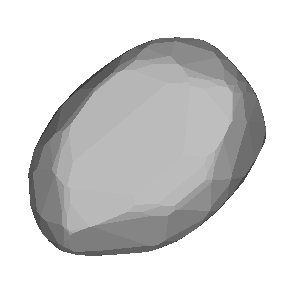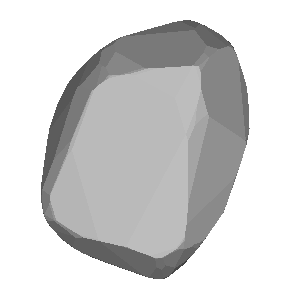2023-09-25 / UCAC4 553-005449 / (595) Polyxena
| # | OBS | Observer | Occ | Meth. | Instr. | CC | TSRC | UT1 | UT2 | UT3 | UT4 | UT2E | UT3E | Dur. | Chrd |
|---|---|---|---|---|---|---|---|---|---|---|---|---|---|---|---|
| 1 | show | Jean-Francois Pittet | O+ | VID | M254 | DE | GPS | 19:24:34 | 19:25:59.92 | 19:26:04.80 | 19:27:32 | 0.13 | 0.15 | 4.88 | 43.4 |
| 2 | show | Andreas Tazreiter | O+ | CCD | L180 | AT | GPS | 19:23:17 | 19:25:55.7 | 19:26:06.3 | 19:31:17 | 0.9 | 1.0 | 10.60 | 94.3 |
| 3 | show | Marian Urbanik | O+ | VID | T400 | SK | GPS | 19:24:12 | 19:25:42.4 | 19:25:55.21 | 19:27:11 | 0.3 | 0.17 | 12.81 | 114.0 |
3 observations found in db: sodis
Available (probably) matching predictions (click on the link to switch):| JPL#104 : b68f1d63-9f28-403b-8ec1-60ed87b30c8e [db: observed] |
Using prediction b68f1d63-9f28-403b-8ec1-60ed87b30c8e for map and profile fit
| Ellipse and circular profile fits to the timings (chords) |
|---|
|
|
Auto-Fit Result: Size = 132 x 85 km a',b' = 66.1, 42.5 km X0,Y0 = -973.4, 34.2 km Mean diameter = 106 km From 3 chords (VID,CCD) You can enter space separated chord numbers (example: 11 4 8) or a method like VIS to ignore all visual timings, or a time source like RAD and NTP (but not GPS). If the plot disappears, then there are less than 2 chords left (too much ignored, go back with browser). Check SiMDA for size and mass data. Check Johnston Archive for satellites. |
Sky projection (artificial light) for occ. time: 2023-09-25, 19:25 UT (JD = 2460213.309)
| DAMIT | Q | P (h) | λ, β | JD0 | JD-JD0 | φ0 | Version | Modified | Vol-equiv D | Cmnt |
|---|---|---|---|---|---|---|---|---|---|---|
| # 228 | None | 11.794 | 42°, 8° | 2.449187e6 | 11026.3 | 0.0° | preliminary model, agrees well with occultation data http://www.asteroidoccultation.com/observations/Results/Data2015/20150415_PolyxenaProfileDAMIT228.gif | 2015-08-25 | not scaled | 2008-09-16 |
| # 229 | None | 11.794 | 222°, -4° | 2.449187e6 | 11026.3 | 0.0° | preliminary model, probably wrong pole solution, does not agree with occultation data http://www.asteroidoccultation.com/observations/Results/ | 2015-08-25 | not scaled | 2008-09-16 |


Image size: 300px. Transparent image background for copy & paste
| Map with groundtrack and observer stations |
|---|
| Event Details |
|---|
Occultation UUID [and DB] : b68f1d63-9f28-403b-8ec1-60ed87b30c8e [observed] Occultation Date + Time : 2023-09-25 at 19:15:06 UT +/- 0.06 min [1] Object Designation : (595) Polyxena Orbit Class : MBA Star Designation : GDR3 0085138002837333504 Star Coordinates (ICRF) : RA = 02 48 51.4436, DE = +20 29 03.701 [2] Star Magnitudes : G = 12.25 mag, RP = 11.75 mag, BP = 12.59 mag Object Magnitude : V = 13.18 mag Estimated Magnitude Drop : 1.3 mag Estimated Max. Duration : 12.2 sec Object Mean Diameter : 109 km (src: astorb) Speed of the shadow : 8.9 km/s Elongation to Moon & Sun : 94° (sunlit = 82%), Sun = 136° Cross-track uncertainty : 10.7 mas = 18 km = 0.17 path-width (1-sig) RUWE and duplicate source : 1.18 mas, dup.src = 0 (0:false, 1:true) Ephemeris Reference : JPL#104 [1] time t0 of closest geocentric approach c/a, [2] including proper motion until t0 |
| More Data and Informations |
|---|
(If error 404: link not valid which means no data available)
| Aladin Sky Atlas |
|---|
| Aladin Lite direct link (has Gaia overlay) |